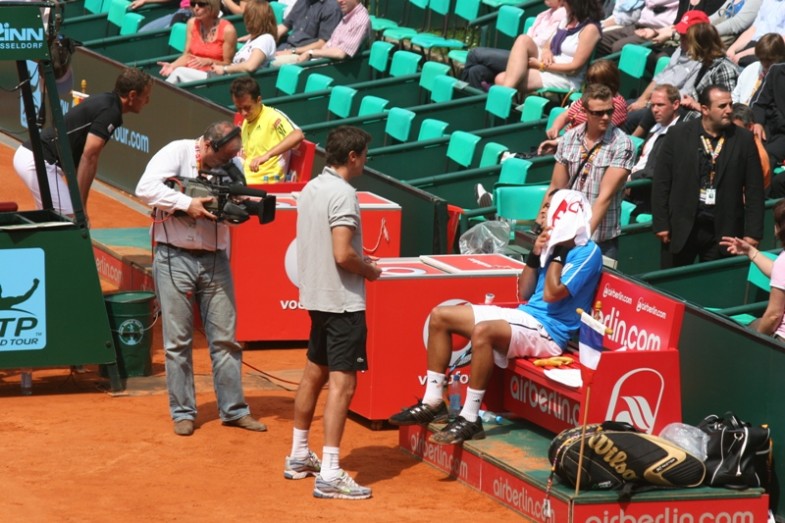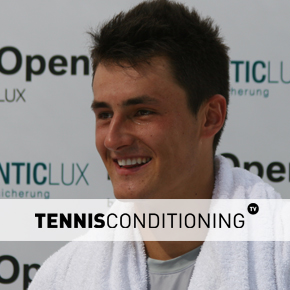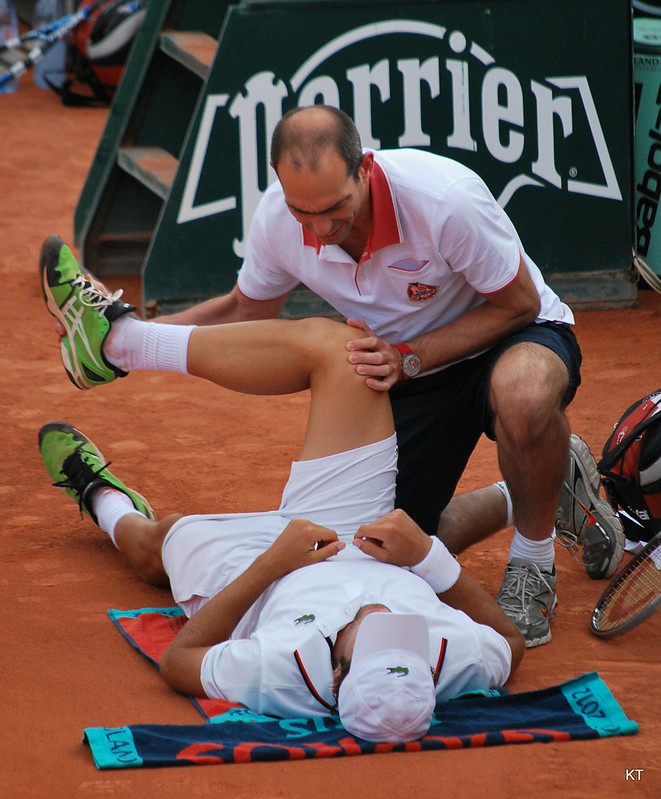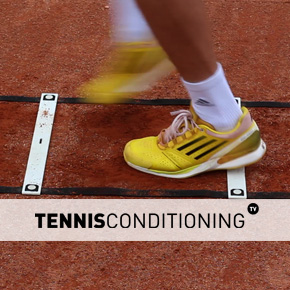I’m writing this post in response to many parents that have approached me and told me that they have been working with a fitness coach yet their son or daughter had stress fractures at their ankles, lower back, or are constantly injured.
The main questions were: why it happened and what can they do?
What they can do depends on the respective situation. When it comes to the why then there are also many possibilities.
Yet there is a common scenario that I have seen over the years and I want to bring it to your attention.
My goal is not to bash fitness coaches. I want to give parents who want the best for their child a different perspective and information so that they can make informed decisions when picking a coach.
I’m stating my opinion on this matter because I believe that coaches also need to be accountable for their work and cannot always blame the athlete when things don’t turn out well.
At the same time it must be said that the athletes also must adhere to their responsibilities and at the end of the day only the athlete is in charge of their success or failure.
Ok, here we go.
The Fat-And-Happy Syndrome

It is a widespread phenomenon. Fitness coaches are out of shape themselves yet they are responsible for the physical development of their athletes and demand professionalism.
With respect to fitness coaches it is advisable that “the coach can do what they preach”.
That means that the fitness coach should be in shape and able to perform various exercises themselves, eat right, give advice and support the athletes because it sets a professional tone and demands respect from the athletes.
In other words, if the coaches do what they say and do what they demand from others as well every time then the players will respect them, believe in them and follow their lead!
The motto here is: respect is earned and not simply given to you!
When fitness coaches are out of shape or even obese the physical well being of the athlete and hence his/her career can be in danger!
The Good Fitness Coach
Photo by www.localfitness.com.au
If a fitness coach is in fact in decent shape, is able to perform various exercises themselves, and has done the strength and conditioning programs themselves then he/she can better understand the physiological demands (e.g. exercise intensities) of the respective exercises and hence has a better understanding with respect to training volumes and intensities!
Having this expertise and ability enables the fitness coach to design and implement strength and conditioning programs without causing exhaustion, overtraining and injuries.
Thereby the fitness coach can maximize the athletic abilities while minimizing the risk for injury.
That allows the athlete to maximize his/her performance potential throughout his/her career because there is no downtime, loss of performance and confidence due to injuries.

It is a plus if the fitness coach also plays tennis because then he or she understands what it feels like to practice or play tennis for 2 hours.
This is important because, in reality, tennis players often have practice before they are going to work out.
Now, from a conditioning standpoint, the fitness coach should take this scenario into account before designing the strength and conditioning program.
Otherwise the risk of overtraining and injury increases, which leads to a decrease in performance, and that isn’t the goal here.
Therefore, in an ideal scenario, the tennis coaches, fitness coaches and physiotherapist are all on the same page to maximize the athlete’s potential because they all play an important role in the developmental process.
In reality this scenario rarely ever happens due to various reasons. Egos often time play a big role.
The Bad Fitness Coach
On the other hand, a fitness coach suffering from the fat-and-happy syndrome often times cannot perform the exercises correctly, doesn’t understand the physiological demands of the exercises and overall training volumes, cannot eat right and hence will cause constant injury to his/her athletes.
In addition to that the players don’t respect him or her.
In reality most of those fitness coaches design strength and conditioning programs that are impossible to do because the athlete physiologically cannot handle what was written down on paper.
For instance, stabilizers fatigue or they would reach fatigue points that would compromise various cell components (e.g. sarcoplasmic reticulum, sarcolemma) as they relate to neural drive.
In other words, the athletes don’t have enough energy in the tank to play tennis for hours and commit to brutal workouts day in and day out!
Once the athlete fatigues he/she gets sloppy and exercise execution suffers, which increases the risk for injury. If you are suffering from knee pain find out how to prevent knee pain and improve knee strength.
Now, when that happens most of those coaches will exhibit an authoritarian leadership style (which means that they are in charge and know everything best) and hence are constantly yelling at the athletes during training to “motivate them to work out harder” because “more is better” and “you have to suffer” for success. Sounds familiar?
Yes, you need to work hard, yes you need to suffer, be committed and disciplined…yet it is important to understand that you need to be able to do it day in day out for years if you want to get to a level where you can make a living playing tennis.
The Ugly Truth
This arraignment of working with coaches suffering from the fat-and-happy syndrome combined with their lack of expertise and authoritarian leadership style is often times the perfect recipe for disaster.
Causing many tennis players to stop pursuing a career in tennis before it started or inhibiting them in developing their true performance potential!
Go to a tournament or NCAA events and watch how many tennis players are taped and bandaged up. Is that really necessary?
There are former top 10 players that fell out of the top 100 and had to fight their way back.
Yet most of them never reached the same level of play and lost millions because of it! Yet I never hear a coach take any responsibility…I wonder why that is?
What Coaching Style Do You Prefer?

In my opinion there are 2 ways your athletes will be able to attain success and you have to choose, which option you believe works best for you:
- you force the athlete by putting a gun to their head
- the athlete respects you and does something because they believe in it
Authoritarian Approach
The first option works very well for some people and is often times associated with communistic countries like China and the former DDR; it’s an authoritarian approach.
Basically the coach is the dictator and the athlete has no say in anything. Does it lead to “success”?
Surely it does…yet how many fail by this approach and what’s happening to the athletes after their active career?

Empathetic Approach
The second option is rather an empathetic approach to coaching. You convince the athlete by communicating well that your coaching approach is the best for him or her.
In other words, you plead your case and can convince the athlete that it’s the best for them. You, the coach, are their mentor and friend and you are sitting in the same boat with the athlete and his parents.
Which option you should choose depends on what you believe leads to success for you. Some players prefer the hardcore drill sergeant mentally, whereas others like the team approach.
Training Zone
In this section we provide you with some more workouts you may be interested in to optimize your training. Have fun and happy training!





